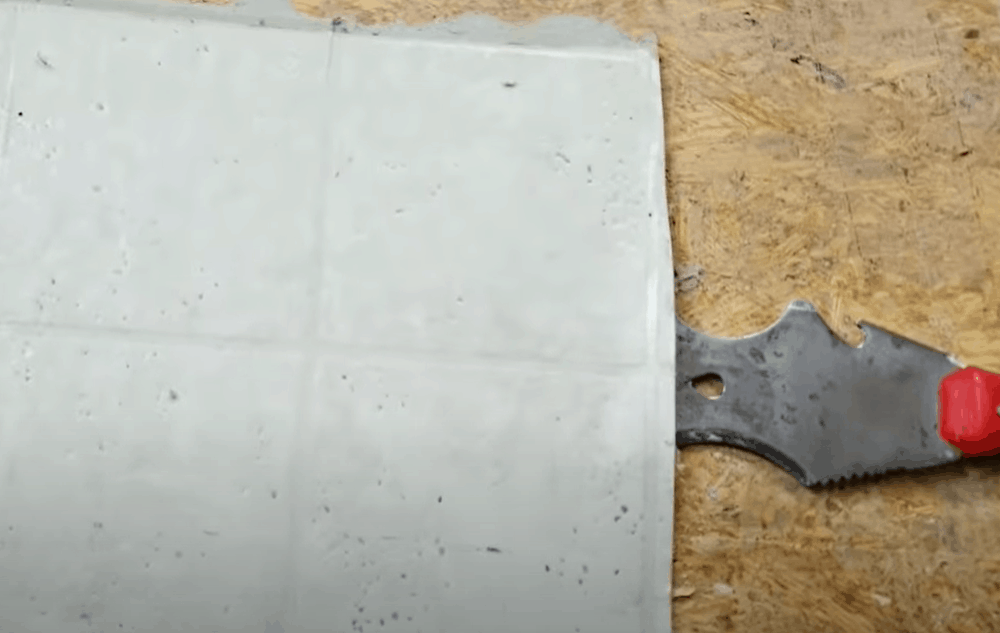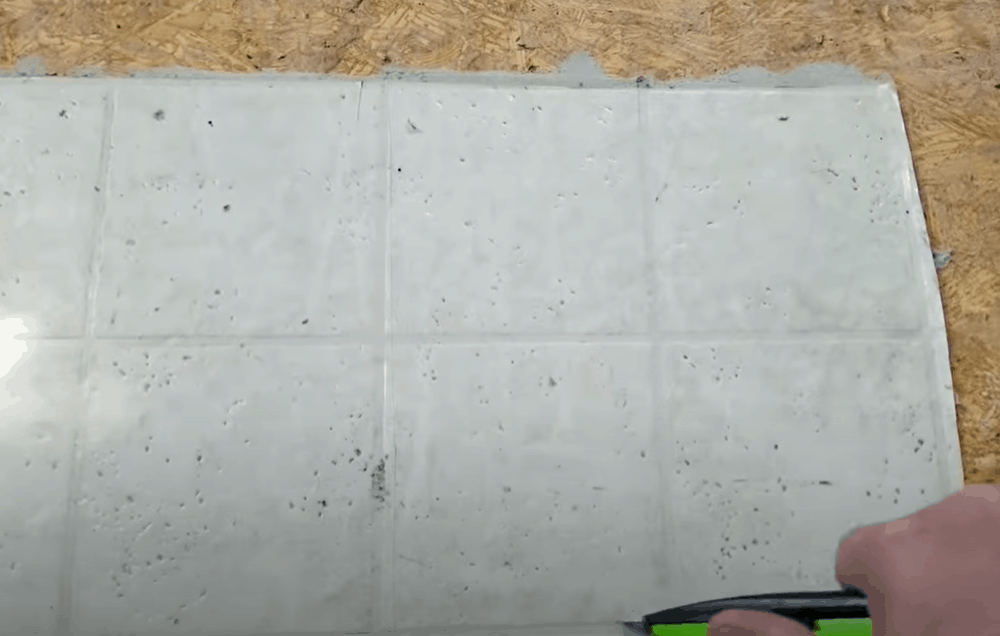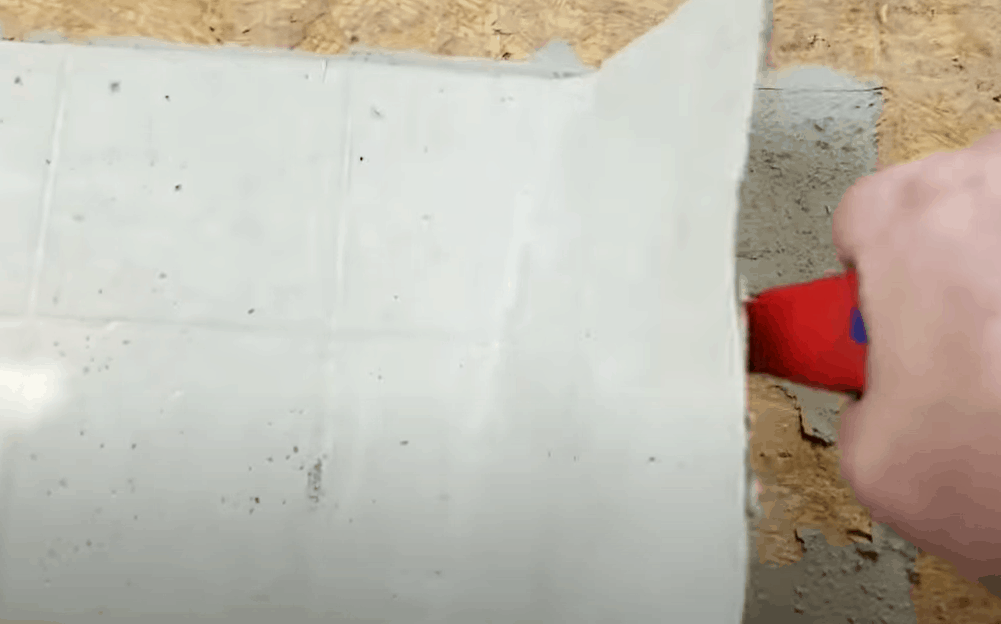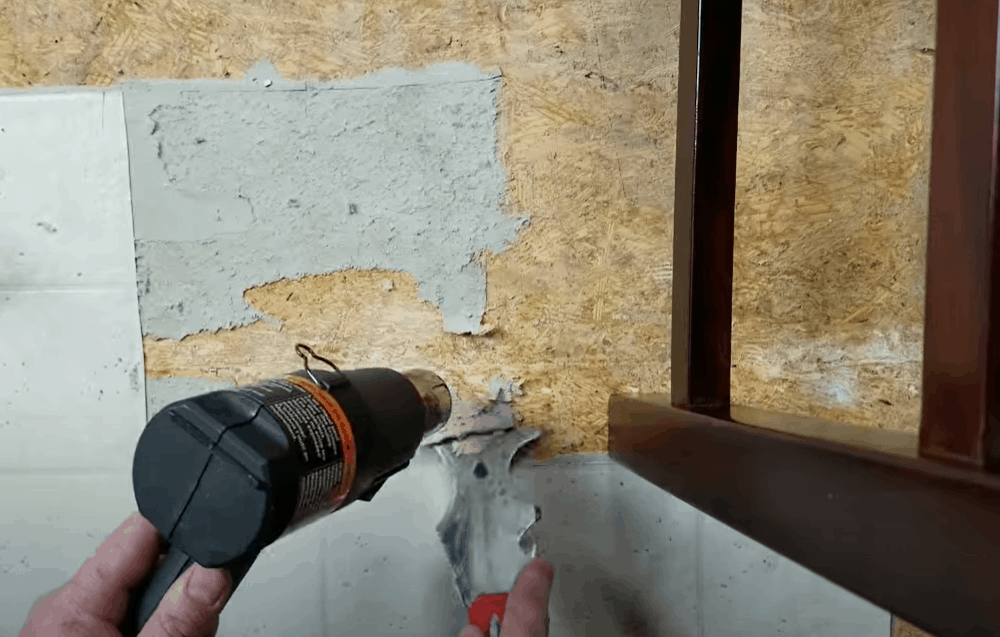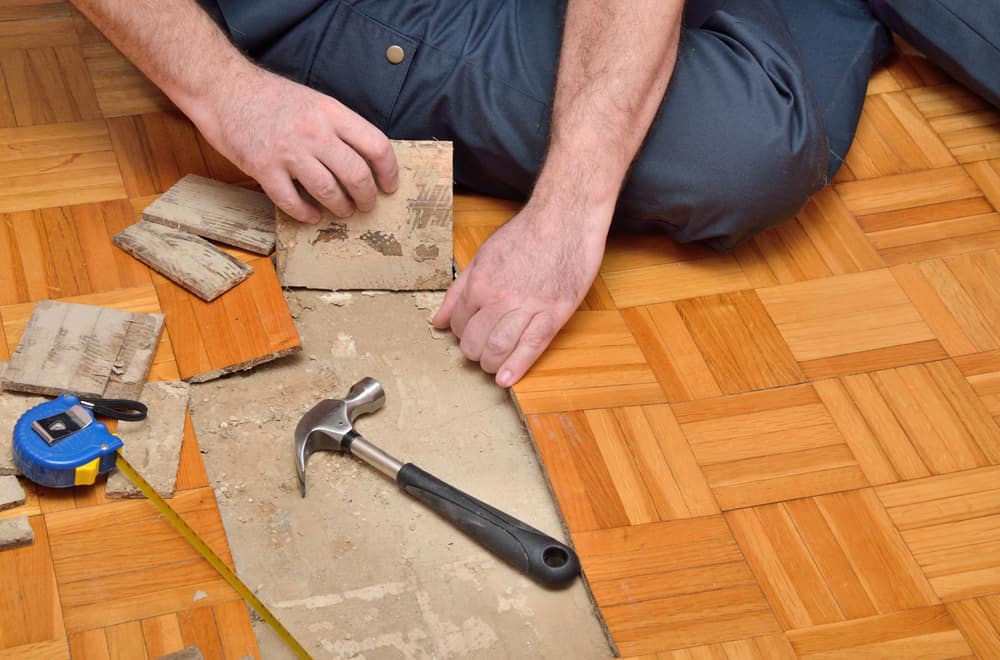Linoleum and vinyl are classic and sturdy flooring materials often found in kitchens, living rooms, hallways, and other high-traffic spaces. But because the adhesive holding these floorings in place often gets stronger over time, ripping out an outdated style can be challenging.
Things get even more difficult when the flooring is laid on a wood subfloor, as you must be careful not to damage the wood. Fortunately, this guide explains how to remove glued down linoleum or vinyl from a wood floor and tells you all you need to do (or not do) to keep your wood subfloor intact.
Table of Contents
Materials Needed to Remove Glued Down Linoleum or Vinyl From a Wood Floor
You will most likely have the majority of these tools and materials at home, but any missing supplies can be rented or bought affordably from your local hardware or home improvement store.
- Pry bar: A pry bar will make it possible for you to pull two objects apart, for instance, detaching the baseboard trim from the wall.
- A block of wood: Use this with the pry bar to pull the baseboards from the wall.
- Rubber mallet: This will come in handy if you can’t apply enough force with your hands to pull out the baseboards.
- Utility knife: You will need this to cut through the flooring.
- Scraper: Use this to separate the glued down part of the flooring from the wood floor.
- Heat gun: A heat gun will loosen hard adhesive and make it easier to scrape off. If you don’t have access to a heat gun, you can use a hair drier; just make sure it is set on high.
- Work gloves: Any puncture-resistant pair will get the job done.
5 Easy Steps to Remove Glued Down Linoleum or Vinyl From a Wood Floor
Use the following guidelines to carefully remove glued down linoleum or vinyl flooring from a wood subfloor without damaging the wood.
Step 1: Remove the Quarter-Round and Baseboard Trim
Some floors will have a quarter-round molding to cover the space between the floor and the baseboards. If your linoleum or vinyl flooring has this, use your pry bar to pull it out.
Once done, remove the baseboards. These will mostly be installed over the flooring and you must pull them out before starting on the flooring.
To get started, place a block of wood against the wall, two to three inches above the trim you intend to remove. Next, insert the pry bar between the trim and the wall. If you find trouble pushing the bar in, gently tap it with a rubber mallet to force it in.
Pry the boards systematically, starting from one corner of the wall to the next. Go slowly to avoid snapping them. Even if you don’t plan on using them again, pulling them out in full lengths will still be easier than pulling small, broken pieces.
Step 2: Remove the Middle Part of Your Flooring
Most of the time, linoleum or vinyl flooring will be glued just around its perimeter, which makes it much easier to remove. In other words, only about five-inch perimeter is glued down. The middle part of the floor lays loose.
Using a utility knife, cut around the flooring about seven inches away from each wall, making sure the cut stays parallel to the walls. Do not cut too deep, or you will gouge your wood floor underneath. Now, try pulling up the middle part of your linoleum or vinyl and see if it comes out easily.
If you are working on a large floor, consider cutting the flooring into long, narrow strips to make it more manageable. A fifteen-inch strip of flooring, for instance, will be much easier to pull off than, say, a four-foot sheet. Narrow strips will also be much easier to dispose of than larger sheets.
There is no need to keep your linoleum or vinyl in larger sheets unless you intend to use it again or give it to someone. Sure, rolling up or pulling back larger sheets can be tempting, but when the sheets become heavy, they will be too difficult to manage.
Step 3: Remove the Glued Part of the Flooring
For any glued-down linoleum or vinyl to come out of the floor, you will need to scrape it off. Start by prying the flooring and scraping under it to detach it from the wood subfloor. Hold your scraper at a 45° angle to avoid chipping the wood.
For the most part, only the flooring will come out at this time. Depending on how you are holding your scraper, some of the glue may come out too, but mostly, the scraper will only loosen the flooring. Work in small sections, pushing the scraping tool in short thrusts until you have removed all the flooring. Use your free hand to peel back the flooring,
If you are removing an old floor, you will find that the scraper chips away at the adhesive relatively easily.
Step 4: Heat the Leftover Adhesive
Heating will help soften the hard adhesive and make it much easier to remove. To start, turn your heat gun on low and wait until it sufficiently heats up.
Then, hold it over the adhesive, about three and a half inches away from the floor. Do not let the heat gun touch the adhesive.
Now, grab your scraper and scrape off the softened glue, using short thrusts. Again, work the tool at 45° so you don’t scratch or dent the wood flooring.
Scrape small sections of the floor at a time. If the scraper stops moving through the adhesive easily, stop to reheat and loosen the adhesive. Depending on how hard the glue is, you may need to pass the heat gun over it several times to completely get rid of it.
Step 5: Dispose of the Flooring
There is a good chance you won’t be using your old linoleum or vinyl again, which means, you will probably be throwing it away.
If you cut your strips with a utility knife, you can easily fold them up accordion style (into small squares). Check out this video on how to properly do an accordion fold.
In most communities, old linoleum or vinyl floors cannot be recycled, so you will likely need to dispose of yours the same way you dispose of other trash.
However, keep in mind that some places don’t accept building materials as household trash, and you may have to transport your flooring to a designated waste disposal site. Check with your local ordinances on the recommended ways to dispose of flooring materials in your area.
Additional Tips for Removing Glued Down Linoleum or Vinyl From a Wood Floor
Avoid Using Chemical Products to Soften the Adhesive
While there are plenty of products that can be used to loosen the adhesive and make it easier to scrape off, avoid using these in this project, as they may soak into the wood and damage it.
Wear Protective Gloves
A pair of gloves will not only keep your hands from coming into contact with the adhesive and other chemicals; it will also keep them safe from unnecessary scrapes and bruises. Invest in a high-quality pair that doesn’t get punctured easily.
Do Not Use Extra Sharp Objects to Scrape Adhesive Off a Wood Floor
To avoid damaging the wood flooring, it is important that you keep away from pointy scraping tools. And even when using a flat scraper, make sure to hold it at a slanted angle so you don’t chip the wood.
Test Your Flooring for Asbestos
If you have old linoleum flooring, you may want to test it for asbestos before you start the removal process. Some linoleum and flooring adhesives especially those made in the 70s and earlier may contain asbestos that may be harmful to your health.
Now, asbestos-containing floors will generally not be harmful unless they are disturbed; and pulling out an asbestos-containing linoleum will do just that.
When you remove a linoleum floor that has asbestos, you will likely release asbestos dust and fibers into the air, and inhaling or ingesting these can cause chronic diseases like asbestosis, mesothelioma, and lung cancer.
It’s important that you conduct the necessary tests to find out if your linoleum has these harmful chemicals. If you have an asbestos kit, you can go ahead and perform the test yourself. If not, cut a small piece of the flooring and take it to your nearest asbestos abatement plant for testing. Floors that test positive for asbestos should only be removed by a professional.
The Takeaway
Removing glued down linoleum or vinyl from a wood floor may seem like a complex job, but as you can see, it really is not. If you have a utility knife, scraper, and a heat gun, you can pretty much do the job yourself.
Also, if you are removing a linoleum floor, make sure to first do an asbestos test. And once you start removing the adhesive, skip pointy scrapers and store-bought adhesive softening products to avoid ruining your wood floor.
